Do dogs get ticklish? What wakes up mosquitoes at meal times? Do animals use weapons? In this fast-paced Question and Answer show we also focus on the nuclear threat from Fukushima and hear how gut bugs raise the risk of heart disease, why flaps for wind turbines have got engineers in a spin, and why tidiness stops stereotyping. Plus, how to make a balloon fireproof and what causes dark circles under the eyes when we get tired...
In this episode
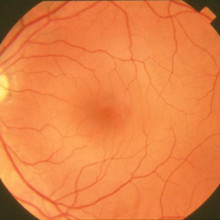
- Scientists grow retina in a dish
Scientists grow retina in a dish
Visionary scientists grow retina in a dish - In a landmark breakthrough in developmental biology, scientists in Japan have succeeded in growing a retina in a dish.
The research, published in the journal Nature by Mototsugu Eiraku and his colleagues at the RIKEN Centre for Developmental Biology in Kobe, marks a step change for the field of regenerative medicine.
Where previously scientists had shown that it was feasible to persuade stem cells to turn themselves into a limited subset of retinal components, nobody had quite expected that it would be possible to grow a whole retina just yet. The key to the breakthrough appears to be the way that the team set up their experiments.
 They used mouse embryonic stem (ES) cells, which were grown in a three dimensional culture system that included components called extracellular matrix materials. This triggered some of the ES cells to form ball-like vesicles, which, with further nurturing, then developed an invagination on one side that sank into the ball, producing a cup-shaped structure strongly resembling the developing eyeball see in an embryo.
They used mouse embryonic stem (ES) cells, which were grown in a three dimensional culture system that included components called extracellular matrix materials. This triggered some of the ES cells to form ball-like vesicles, which, with further nurturing, then developed an invagination on one side that sank into the ball, producing a cup-shaped structure strongly resembling the developing eyeball see in an embryo.
Within this structure and after about nine days total in culture, the cells of the mature retina then began to appear, including the pigmented epithelial cells that form the supprting layer at the back of the eye; this was followed by the formation of rod and cone photoreceptors, the specialised cells that turn light waves into nerve signals.
It should be emphasised that this process all occurred spontaneously, without further manipulation on the part of the researchers, meaning that, at the moment, the molecular signals driving this process aren't known. But this feat has established a system that will now enable scientists to study the development of the retina.
Perhaps more importantly, it also means that the possibility of re-growing a retina to replace one destroyed by disease or trauma has come one important step closer.

01:31 - Gut bugs and heart disease
Gut bugs and heart disease
We all know that what we eat can affect our risk of heart disease - for years health professional have been giving the message that cutting the amount of fat in your diet can help to cut your risk. But it's not clear exactly how a high-fat diet contributes to heart disease risk, as it's not a straight relationship between the fat you eat and the fatty compounds that get laid down in your arteries and cause problems. 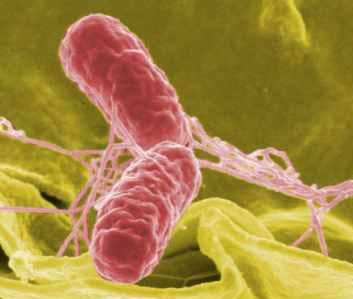
Now a new paper from researchers in the US, published in the journal Nature this week, provides an interesting new angle - they think that it might be the bacteria in your gut that turn fat in your diet into the gloop that clogs your arteries.
The scientists, led by Zeneng Wang, started off by taking a relatively new approach, known as metabolomics, to search for molecules in the body that might be involved in heart disease. They took blood samples from people who had suffered a heart attack or a stroke, and compared the levels of a range of small molecules in their blood with levels in the blood of healthy people.
Intriguingly, they found that people who had suffered heart disease had much higher levels of three molecules that are all produced in the body by the breakdown of phosphatidylcholine, or lecithin - a nutrient that's found in a wide range of foods, but particularly in fatty foods.
When you eat something containing lecithin, enzymes in your gut break it down to produce a molecule called choline. A lack of choline in the diet can cause liver disease and muscle damage, so it's pretty important. But then it gets interesting. Choline is then broken down by bacteria in the gut to produce trimethylamine - a chemical that stinks of rotten fish. This trimethylamine gets taken into your bloodstream and goes to the liver, where it's turned into trimethylamine oxide - and it's this chemical that seems to contribute to the formation of the fatty plaques that can clog arteries and cause disease.
To prove the link between a fatty diet and the levels of the bad chemical trimethylamine oxide (TMAO), the scientists gave a lecithin-rich diet to mice prone to developing heart disease. They found that the fatty diet increased the levels of TMAO in the animals' blood, and the mice had more artery-clogging plaques. And to show that the gut bacteria were involved, the researchers treated mice with some strong antibiotics that nuked all the bacteria in their gut. They found that trimethylamine oxide - the bad chemical - was no longer produced.
We need the bugs in our guts to help us digest our food and keep the gut healthy, so it's not practical (or even really possible) to just get rid of them all. But if scientists can identify exactly which species of bacteria are producing the trimethylamine, then it might be possible to specifically get rid of them. Alternatively, maybe researchers could hunt for some "good" bacteria that might help to control the bad bacteria producing trimethylamine.
And it might also be possible to develop drugs that specifically block the liver enzyme that converts trimethylamine into the plaque-causing TMAO. The research also helps to explain why a fatty diet, with lots of lecithin, might contribute to heart disease - interestingly, choline, produced from lecithin, is sometimes taken by people as a health supplement, so this work suggests that might not be such a great idea if you want to reduce your risk of heart disease.

05:26 - Flappy wind turbines
Flappy wind turbines
Wind power is becoming more and more popular, but one of the major reasons that it is so expensive is that the wind is not uniform. On some days the wind blows very slowly but on others it blows very hard or even worse provides vicious gusts. This means that you have to build a wind turbine that can survive the worst gusts which makes it far heavier than it has to be for 99% of its normal use. Most turbines can feather or change the angle of their blades in very high winds to avoid damage, but this can be too slow to avoid damage from a quick gust.
A group from Risø DTU in Denmark is working on a technology which may help. In the same way that you can change the amount of lift on a plane wing using flaps, or aerolons to control the plane, if you add a trailing edge flap to the wind turbine blade you can greatly alter the amount of lift it is producing and therefore the forces on the structure.
 The big difference between a wind turbine blade and a wing is that an aeroplane is moveable and can be regularly maintained, where as wind turbines are usually in inaccessable places, and maintainance would stop them being economic anyway. This means that conventional mechanical flaps wouldn't work, so the group is working on flexible rubber or plastic flaps which can be activated by pumping air or hydraulic fluid into specially designed cavities at the rear of the flap.
The big difference between a wind turbine blade and a wing is that an aeroplane is moveable and can be regularly maintained, where as wind turbines are usually in inaccessable places, and maintainance would stop them being economic anyway. This means that conventional mechanical flaps wouldn't work, so the group is working on flexible rubber or plastic flaps which can be activated by pumping air or hydraulic fluid into specially designed cavities at the rear of the flap.
As the flap is much lighter than the whole blade it can be activated far more quickly than the feathering system so it can adapt to individual gusts without a huge use of energy, which should enable wind turbines to be built lighter and therefore cheaper.
They have built laboratory models which are very promising, and the group is now moving onto building a real test wind turbine.

07:35 - Stem Cells Spontaneously Sorted for Sight
Stem Cells Spontaneously Sorted for Sight
with Dr Jane Sowden, University College London
Chris - In a landmark breakthrough this week, Japanese scientists have used stem cells to grow a new retina in a dish, and this could hold the key to one day producing a replacement retina for patients who have been blinded by diseases or eye injuries. To tell us more about this and how it works, we're joined by University College London researcher Dr. Jane Sowden, who wrote a commentary on the work this week. Hello, Jane.
Jane - Hello, Chris.
Chris - So do tell us first Jane, what actually in a little bit more detail, have these researchers been able to do?
Jane - In this new study, Sasai's lab have shown that it's possible to grow the complex structure of the retina in a cell culture dish. So the retina is the complex layer of neural tissue at the back of the eye which detects light and transmits visual information to the brain. What's really impressive about the new study is that the synthetic retina were grown from an embryonic stem cell line. So these are the pluripotent cells which were able to generate all the different cell types in the body. So the starting point in these experiments is a set of identical cells and what Sasai found was that under certain culture conditions groups of the cells self-organised and spontaneously formed into a cup shape called the optic cup, which is shaped rather like a brandy glass. From the inner layer of this cup the retina forms, and indeed it did differentiate in the dish.
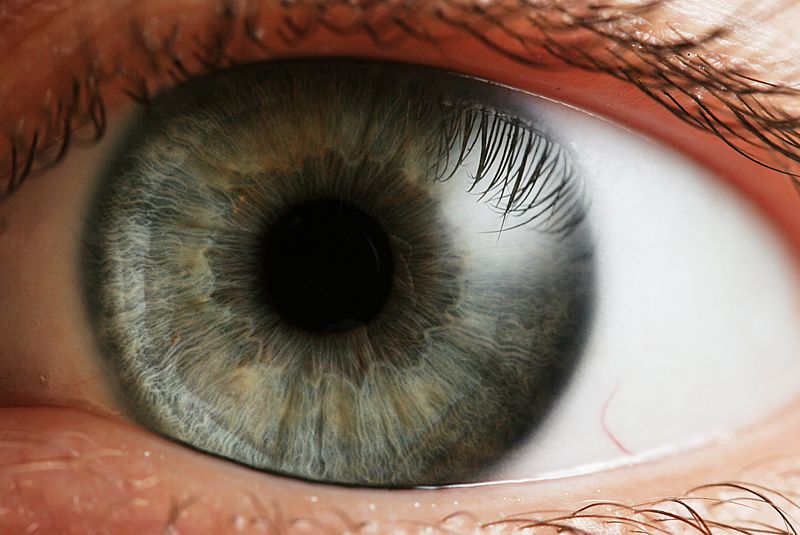 Chris - Why has this not been possible before? What breakthrough have they made, so that we will have been able to make this occur in a dish where previously, scientists have failed?
Chris - Why has this not been possible before? What breakthrough have they made, so that we will have been able to make this occur in a dish where previously, scientists have failed?
Jane - Well, one of the key components that they added which previously was not used was something called matrigel, which is a component of basement membrane, and so that seems to have been important for helping the cells to form into a layer from which the retina develops. This process in human life would occur by around the 6th week of development. In their study, they used mouse embryonic stem cells, so an important next step will be to see if the same approach can be applied to human embryonic stem cells.
Chris - And what about informing our understanding of how this structure does develop? Presumably, because you can now make it happen in a dish, you can begin to interrogate it genetically and ask what genes are being turned on in what cells and in what order to make this structure form.
Jane - Absolutely. I think it provides us with a new system to study how the eye develops and that's important for understanding the situations where it doesn't develop normally. I think it's also a very important discovery as it indicates that the embryonic stem cells do have instructions that allow them to self-organise and this will likely apply to other tissues as well as the retina. And so, maybe we're at the beginning of witnessing more abilities of embryonic stem cells to self-organise.
Chris - Now you tantalisingly mentioned earlier, as did I in the introduction, that this might be a step towards being able to grow replacement tissue for people who have eye injuries or eye diseases that cause damage to the retina. Critically, in this paper from Japan, they used embryonic stem cells, but someone who's got an eye disease, obviously, they're beyond the embryo stage by then usually. Is there another cell type that we might be able to make this work from in order to do what they've done for the mouth in the dish in a human?
Jane - Yes. There are human embryonic stem cell lines and I think the other possible source would be what are called induced pluripotent stem cells where embryonic stem cells are generated from other tissues. So either of those cell sources could potentially be used to generate new retinal cells that could be transplanted into the diseased retina in order to provide a treatment for retinal diseases involving loss of retinal cells.
Chris - Do you think if we did get to that stage, if you were to take these newly generated retinal cells and put them into the diseased eye, that they would have a chance of restoring vision for that recipient?
Jane - Yes. I mean, there is still a lot of work to be done, but we and others have shown that if you take immature photoreceptor cells and transplant those into the diseased retina, they're able to restore some light sensitivity. Now, in order to take that kind of approach to patients, it's essential to have a source of immature photoreceptors and it's possible that these kinds of synthetic retinae could provide a source of cells that could be suitable for transplantation into patients.
Chris - What sorts of diseases would you think would be amenable to being treated like that?
Jane - So there are many different types of retinal disease that cause blindness. A large number involve the death of the photoreceptor cells, the cells that sense light. They would include conditions like retinitis pigmentosa and lots of different types of inherited retinal disease which affect 1 in 3,000 people. So those sorts of conditions could be amenable to retinal stem cell therapies.
Chris - Terrific! Jane, thank you very much for joining us to tell us about the work.
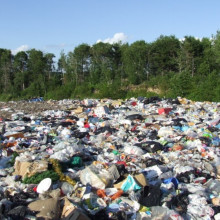
13:26 - Chaos and clutter cause prejudice
Chaos and clutter cause prejudice
Manners maketh man, and a tidy street stops stereotyping - In a surprise finding from the Netherlands, researchers have discovered that choas and clutter cause people to be far more prejudiced than when things are kept tidy.
Writing in Science, University of Tilberg scientists Diederik Stapel and Siegwart Lindenberg took advantage of a strike by cleaners at Utrecht train station to test the impact of a messy environment on peoples' prejudices towards others.
Asking a mixture of white men and women to take part in a questionnaire, the researchers invited the participating commuters to sit on one of a line of six chairs, a seat at one of which was already occupied by either a white or black assistant. Unbeknown to the volunteers, the researchers were watching which seat in the row they elected to sit on.
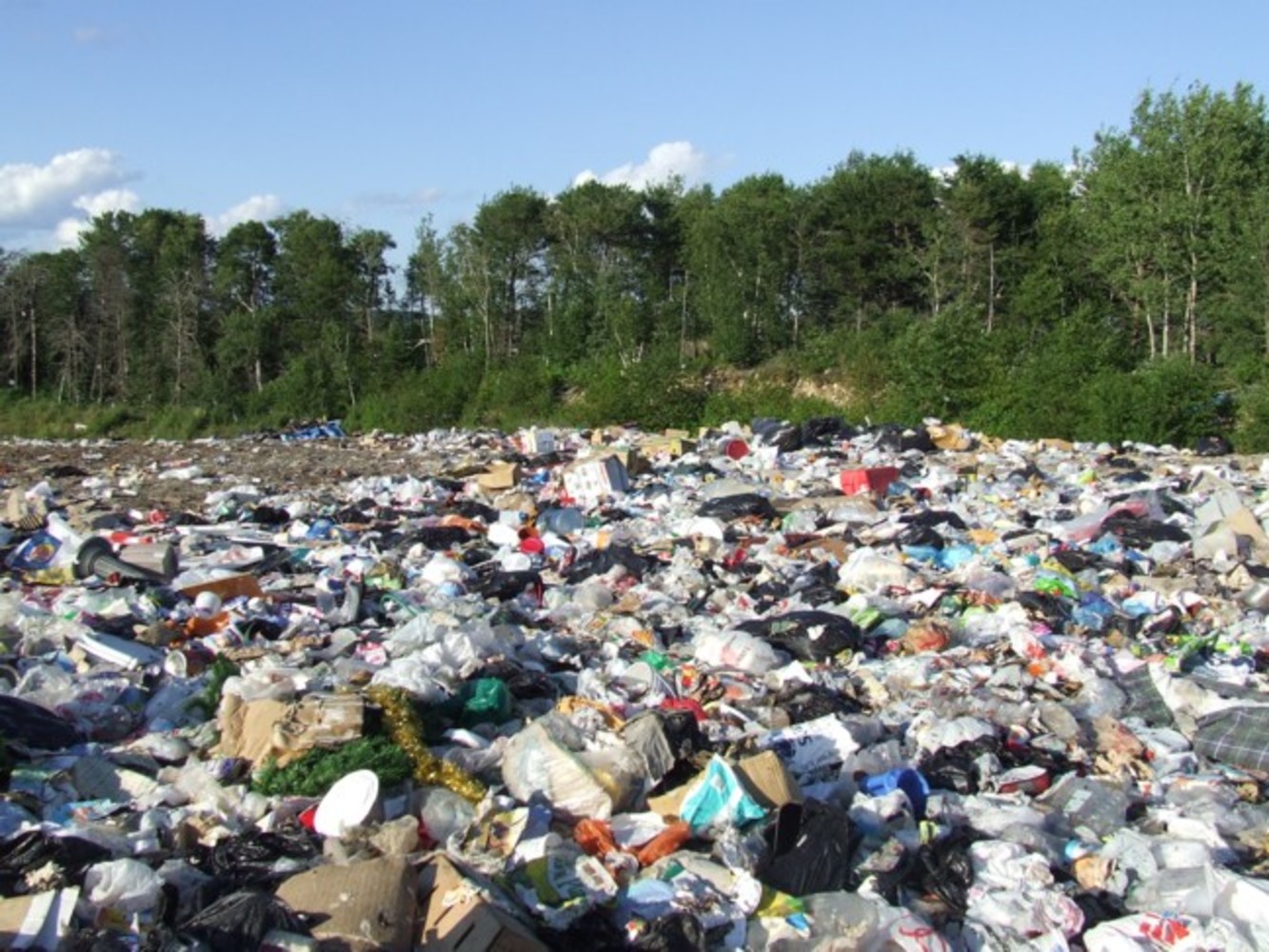 When the station was messy at the height of the strike, the participants sat, on average, 50% further away from the already-seated individual compared with when the station was tidy - but only if he was black. When the already-seated individual was white, there was no difference between tidy and messy days and the participating commuters left an average of two empty seats between themselves and the person already sitting down.
When the station was messy at the height of the strike, the participants sat, on average, 50% further away from the already-seated individual compared with when the station was tidy - but only if he was black. When the already-seated individual was white, there was no difference between tidy and messy days and the participating commuters left an average of two empty seats between themselves and the person already sitting down.
The researchers then carried out a similar experiment in an affluent Dutch suburban street. On the first occasion the street was made to look scruffy, with paving slabs removed, a car parked on the pavement and a bike abandoned beside the road.
Passers-by were stopped and asked to fill out a survey asking questions about stereotyping; they were then given some money for taking part and then invited to donate some of it to a charity supporting minorities.
The researchers then returned the street to its formerly-orderly appearance and repeated the process. In the untidy setting, respondents were far more likely to display prejudiced behaviour and also donated significantly less money to the minorities charity than when the environment was tidy.
The researchers then went on to demonstrate that pictures of disorder and even information presented subconsciously in a disordered way could induce similar behaviours in study participants.
But why? Their explanation is that perceived disorder in a person's surroundings trigger a craving to create order, which includes using highly simplified categories and judgements to classify the world, which in turn trigger discriminatory behaviours.
This, they say, is a learning point for local councils and civil amenities providers, pointing out that "Signs of disorder such as broken windows, graffiti and scattered litter will not only increase antisocial behaviour, they will also automatically lead to stereotyping and discrimination.
Thus...investing in repair and renovation, and preventing that neighborhoods fall into disarray, may be relatively inexpensive ways to reduce stereotyping and discrimination."

17:39 - Comets may have had a watery past
Comets may have had a watery past
Comets are termed dirty snowballs, mainly made up of water, and carbon-dioxide ice with a few rocky minerals mixed in. They are thought to have formed way out in the cold outer reaches of the solar system and are then deflected somehow into the inner solar system where the heat of the sun causes the water, carbon-dioxide and other volatiles to sublime straight to a gas throwing out lots of material and forming the comet's tail. Because the pressure is so low, liquid water should not be able to exist.
 Up until recently though there way no way of prooving this, but NASA's stardust mission made a close flyby of the comet Wild 2 in 2004, and in this flyby it flew through the comet's tail, and mounted on the spacecraft was a plate made out of the increadibly low density silica based material aerogel. This meant that any small dust particles hitting the plate were slowed down gently and trapped. The sample plate was then returned to earth in 2006, and ever since NASA scientists have been very carefully studying the grains of cometary material since then.
Up until recently though there way no way of prooving this, but NASA's stardust mission made a close flyby of the comet Wild 2 in 2004, and in this flyby it flew through the comet's tail, and mounted on the spacecraft was a plate made out of the increadibly low density silica based material aerogel. This meant that any small dust particles hitting the plate were slowed down gently and trapped. The sample plate was then returned to earth in 2006, and ever since NASA scientists have been very carefully studying the grains of cometary material since then.
Eve Berger and collegues are some of those who have been doing so, and the have found a copper iron sulphide mineral called cubanite in some of the cometry grains. This is particularly interesting, because cubanite is only produced in the presence of liquid water and it has two forms, one stable above 210 celcius and the one they found which is only stable below 210 celcius, so they know the grains haven't heated up since they were formed.
Either the cubanite was created somewhere else and got integrated into the comet which is interesting, or even more interesting the cubanite was formed in the comet, possiblly in a collision showing comets have a more unique geological history than was thought before.
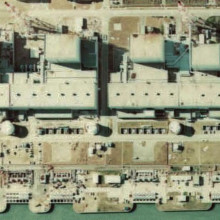
20:36 - Fukushima Reactor Review
Fukushima Reactor Review
with Dr Ian Farnan, Cambridge University Department of Earth Sciences
Chris - To bring us up to date with events at the Fukushima Nuclear Power Plant, and explain how his own work fits in with this week's Nuclear Science Question and Answer theme, we're joined by Dr Ian Farnan from the Department of Earth Sciences at Cambridge University.
Ian - Hello, Chris.
Chris - Just to let people understand about what you do first. Could you just give us a quick round up on what you work on?
Ian - My main research is on the disposal of nuclear waste and in particular I'm going to head up a research consortium funded by the nuclear decommissioning authority on disposing of spent nuclear fuel. The way that radioactivity leaks from spent nuclear fuel eventually is by its interaction with water. What's happening in Fukushima is the interaction of water with fresh fuel.
![Fukushima I Nuclear Power Plant. Tight crop showing reactors 4, 3, 2 and 1, reading left (South) to right (North). Area shown is approximately 600 by 350 metres. Made based on [http://w3land.mlit.go.jp/WebGIS/ National Land Image Information (Color Aerial Photographs)], Ministry of Land, Infrastructure, Transport and Tourism. (c) Made based on [http://w3land.mlit.go.jp/WebGIS/ National Land Image Information (Color Aerial Photographs)], Ministry of Land, Infrastructure, Transport and Tourism. Fukushima I Nuclear Power Plant](/sites/default/files/media/Fukushima_I_NPP_1975_reactors_1_to_4_crop.jpg) Chris - When the tsunami struck it knocked out the backup generators that they had at the plant, which were there to pump water through the core, and disabled those generators. What then unfolded? What was the chain of events - if you excuse the radiation type pun - which then ensued?
Chris - When the tsunami struck it knocked out the backup generators that they had at the plant, which were there to pump water through the core, and disabled those generators. What then unfolded? What was the chain of events - if you excuse the radiation type pun - which then ensued?
Ian - Well there was a little bit of extra leeway, they had some batteries which ran for a little while, for about 8 hours, and then they just ran out. At that point they've got no way of pumping the water through the reactor to keep it cool. So the water in the reactor starts to boil and eventually, it comes out to what's called a pressure regulator which is below the reactor in a large pit, which is within the containment and can contain an enormous amount of water. The dramatic thing that you saw on the TV was the problem that there must have been some interaction with the zircaloy which clads the fuel which started to get oxidised at high temperatures. The fuel heated upand that produced some hydrogen. So there was a mixture of hydrogen gas in this big pit below the reactor. At some point, the pressure was getting too high and the operators realised that in order to preserve the integrity of the reactor pressure vessel, they needed to vent that pit. When they did that, the hydrogen came out and it obviously encountered some oxygen and there was an explosion, and that's what you saw on TV. Basically, there's a weak roof on the top of those buildings with some blowout panels, and that just blew out, a very dramatic event.
Chris - But subsequent to that, what was then the threat, the fact that you had no way of cooling a nuclear core that was still producing quite a bit of heat? I mean, the figures I saw was that it was still producing heat at the rate of 7 megawatts, just a shut down nuclear core as it was.
Ian - Exactly. If you take the Daiichi-1, I think was about 700-megawatts. So, it immediately had shut down, but even though you stop the critical reaction at that point with the rods in, you still get 5% of the power, and that's the thermal power. So the thermal power reactor is three times the electrical power. That's just the efficiency of the generating process. So for the thermal power we would have something like 2.1 gigawatts, so 5% of that is still a lot of energy. But after about an hour, that was already down to about 1%. So, then you've got a lot of exponential cooling, but still a very large amount of energy which you need to dissipate. I mean, this is the point of nuclear power. There's an enormous amount of energy there.
Chris - Absolutely. None of us are in any doubt about the power of nuclear energy. What about the fact that they couldn't then restore cooling to it, so they then had to start pumping sea water in? What's happening in terms of the products - what's in that reactor that's getting out? Is it still contained or are we seeing contamination?
Ian - Well, I think almost certainly we know that the fuel has been compromised. The cladding has been breached because what's being detected in the atmosphere are iodine and there's been some caesium. Almost certainly there would have been other gases like krypton and xenon. With a nuclear fuel it's mainly uranium dioxide when it starts. When you have fission, you produce an enormous cocktail of fission products. These are elements which have roughly half the mass of uranium each. Some of those elements can be accommodated chemically or are solid within the fuel. Some are gases, so iodine is effectively a gas at temperatures of operation, as are xenon and krypton, so those go into the clad of the fuel. Caesium does not incorporate well into the fuel, so that lies on the grain boundaries of the fuel. So the moment the fuel is breached, that material will start to be released and that tells us that the fuel cladding has been breached. Whether it's completely melted together, that's to be seen and we may not know for maybe 4 or 5 years, whether there's been any sort of large degree of melting or whether we've just got serious compromise of the fuel clad.
Dr Farnan went on to
answer your questions on radiation and nuclear power...

How does release of radioactive potassium from coal burners compare to fission reactors?
We put this question to Dr Ian Farnan from the Department of Earth Sciences at Cambridge University:
It's not very much at all. I think the main emission from coal fire power stations is actually the uranium that's in the coal, but that would be at a very, very low level. I'm not sure I can tell you right off the bat, but it is something which is very, very insignificant.
Is more radiation absorbed by the ground or the atmosphere?
We put this question to Dr Ian Farnan from the Department of Earth Sciences at Cambridge University:
It very much depends on the way that the release happens. If you look at the Chernobyl incident, the radioactive cloud or the explosion took it up 30,000 feet in the atmosphere. Here, the major release is coming from a leak in one of these steam separation or pressure regulator devices below the reactor where there's a 20 centimetre crack, and that's going straight out into the sea, so that's going into the ground water system around the reactor.
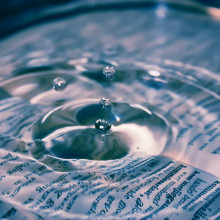
How can water become radioactive?
We put this question to Dr Ian Farnan from the Department of Earth Sciences at Cambridge University:
That's the way that the radioactivity is transported away from the reactor.
Small particles and elements like caesium will actually dissolve in water very readily, so will the iodine of course.
People are probably familiar with iodine solutions. Those can be separated out using ion exchange resins. In fact, when people operate power stations, they regularly filter the water which is used in the cooling cycles or the heat transfer cycles with these resins and then those resins form part of our nuclear waste inventory.
But the problem was that we had this large leak, a crack, and it was going out unregulated.
One of the operations that's going on now is that the plant operators are asking the Japanese government for permission to release water from a holding pool and then let some of the more radioactive water into the waste treatment plants.
They want to release this water from the waste treatment plant and let this more radioactive water into that plant so it can go through all this filter system.

How does food become radioactive?
We put this question to Dr Ian Farnan from the Department of Earth Sciences at Cambridge University...
Well, there are various ways that food can become radioactive.
It becomes radioactive when plants absorb it through their roots as they grow or animals ingest it and then you eat the animals.
You also get [nuclear] fallout. So, in the initial blast where they vented the steam, there would've been some dissolved caesium and iodine, and probably some particles of fuel - very small amounts - in those vents, and those would have then come down around about the Fukushima prefecture.
That's why the Japanese government has banned the sale of various different vegetables and milk within a certain radius of the plant.
When atoms become radioactive, what kind of radiation comes out?
We put this question to Dr Ian Farnan from the Department of Earth Sciences at Cambridge University:
The caesium-137 which is probably the one that people are most worried about because it has this half-life of about 30 years. That would be a beta emitter. Most of the elements that we're worried about in fact are beta emitters, so that's the problem. The thing that you need to worry about is the half-life. So the iodine which has been released has about an 8-day half-life, so that will mean after about 40 days, say, it will be at 3% of its initial value and within 10 half-lifes, it's down to a thousandth of its initial value or amount. So that's something that dissipates very quickly whereas the caesium will stay around for a lot longer. But as I say, there'll probably be less caesium than there is iodine.
Can we use waste nuclear heat to generate electricity?
We put this question to Dr Ian Farnan from the Department of Earth Sciences at Cambridge University:
It's a nice idea in principle. I think one of the problems with this boiling water reactor design that's used in Japan is the fact that they use the water that's directly passing over the fuel rods to go straight into the generator. Generators have become very contaminated now. You'd have a similar problem, I think if you started to take the heat out of the spent fuel. I think there's probably not enough heat there to do a double or a primary or secondary type heat exchange, it would then become inefficient and not worth the trouble.
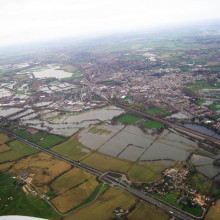
32:41 - Planet Earth Online - Measuring Groundwater
Planet Earth Online - Measuring Groundwater
with Dan Lapworth and Kate Griffiths, British Geological Survey
Kat - It's time now for this week's Planet Earth podcast and to investigate the impact of geology on the spread of pollution, scientists in Oxford are studying how water travels underground across a flood plain. But at this time of the year unfortunately, the research involves getting wet, cold, and muddy as our reporter Richard Hollingham discovered...
Richard - I'm wading across a water meadow just on the outskirts of Oxford. I can see the spires in the distance behind me. The river is somewhere in front of me and I'm not quite sure where the meadow stops and the water starts. I'm being quite careful.
 |
| © British Geological Survey ©NERC |
Kate - What we're actually trying to do is take a sample of the ground water from this little well that you can see in front of you here....
Richard - Kate Griffiths from the British Geological Survey.
Kate - In order to get our sample, we need to first pump out the surface water from around them and then we attach a sort of pipe that enables us to make sure that we're only really sampling the ground water, so we're not getting any interference from the surface water.
Richard - The measuring equipment is all contained in a wheelbarrow, but given that there's water everywhere, I asked Dan Lapworth how they even found the well sampling points.
Dan - One of the problems at this site is that they have to be concealed because there are horses that graze this area. So, on top of each well, we place a piece of metal. So we effectively have to find them using a metal detector. Once we've found them, we're then able to take a sample as Kate has described and there's a whole range of different samples that we're taking. Some to look at the water quality, the water chemistry, some to look at how old the water is to try and date the water, and some to look at the organic carbon in the water to get an idea of the different types of organic carbon that are in the water.
Richard - And there are multiple sites across this meadow?
Dan - There are. It's a transect running at one side near to a landfill, across the meadow, towards the river Thames. So it's a series of three nests of wells and there are two transects that run across the meadow.
Richard - Kate, you're looking at what happens to the water as it goes across. The effects of the meadow on that water underground.
Kate - Yeah, that's right. I mean, flood plains are very active and dynamic environments, so we've got lots of different types of water (we can see some here...). There's ground water under our feet obviously, and there's a lot of mixing going on in this area. We've got sources of water coming from the river gravels that form the city of Oxford, so that's a sort of urban input coming into the meadow, and then we've also got a lot of interaction with the river itself. So, as well as the physical mixing of all these waters, we also got lots of bio-geochemical processes associated with that. We expect these to change spacially and also with time. So seasonally, we'll see changes in the chemistry as water levels rise and fall, and we also see the influence of factors such as Dan mentioned this old domestic landfill which is situated to our left there, and that has its own chemical signature which we can pick up as we monitor.
Richard - I noticed in the mud that standing still is a mistake.
Kate - Yes.
Richard - Because I'm likely to lose a welly, so let me just move around a little bit. Why do this research? What are you looking for?
Kate - The bigger picture really is that these flood plain environments, there's a lot of them across the country and they're under increasing pressure as our urban areas move out towards the flood plains and even on to the flood plains. You can see over there in the distance, the houses are virtually onto the flood plains. So, we want to try and understand what role the flood plain can have in trying to reduce pollutants coming from these urban areas and getting towards the surface water over there which is the river Thames. Obviously, this is applicable to lots of other situations in the UK. A lot of our big rivers have lots of urban areas on their flood plains. So the Thames, the Trent and Mersey for example.
Richard - Dan, you've got a pump operating here and it's pulling up some of the water, into a little beaker.
Dan - Yeah.
Richard - Looks pretty clean to me. Fundamentally, is it quite clean water?
Dan - It's been moving through the ground water, the rocks beneath us, which are actually sands and gravels. As it moves through that, it's actually being filtered as it moves, so the water you can see is relatively clean compared to the lake water that we're standing in, but it still does have lots of dissolved constituents in it. I wouldn't perhaps want to drink it.
Richard - You wouldn't drink that?
Dan - No and it's also probably, there are lots of microbes in it as well. So, it's probably unsafe to drink but it looks very clean.
Kat - That was Dan Lapworth and Kate Griffiths from the British Geological Survey talking to Planet Earth podcast presenter Richard Hollingham.
Do any animals use objects as weapons?
Kat - This is a very interesting one, I've been looking into it a bit and there is some research. It was published in 2007 in the journal Current Biology which does describe chimps using spears. These are sticks that they had broken off and sharpened with their teeth. What they were doing was stabbing them, these sticks, into holes in tree trunks where these little bush babies sleep that the chimps can eat. The researchers saw them doing this stabbing thing and they wondered if they were trying to chase out the bush babies. But they actually saw a chimp stab a bush baby, pull it out on the stick and eat it, suggesting that this is actually hunting behaviour and these chimps are in fact using their sticks as weapons!
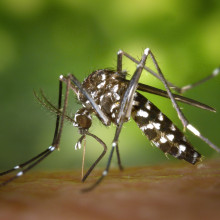
How do mosquitoes know when it's night time?
Well mosquitoes have a body clock just like we do.
They have a cluster of nerve cells in the mosquito nervous system which use a genetic "domino effect" to keep time. So one gene turns on, turns another one on, which turns the first one off and turns the third one on, and so on.
This changes the behaviour of the nerve cell, which in turn then changes the behaviour of the whole organism.
In fact, this is a phenomenon that was first picked up in the 1970s. I've got the paper here: Journal of Experimental Biology, "The Circadian Rhythm of Flight Activity of the Mosquito Anopheles gambiae, the Light Response Rhythm." by D.R. Jones, C.M. Cubbin, D. Marsh from Brunel University. 1972, that paper was published.
They found that mosquitoes have a body clock just like us and you can jet lag them. So, basically, it's their instinct, just like mice and other nocturnal animals use their body clock to wake them up at night to come and find food.
It's the best time for Anopheles mosquitoes to come out at night, that's when their body clock wakes them up.
But, not all mosquitoes are the same. There are some mosquito species that are active during the day but they are not active at night, and I'm thinking of a good example of this is Aedes aegypti mosquitoes. They're big, hungry mosquitoes. They spread things like dengue virus and they're a real pest because, even if you use a mosquito net, you can't protect yourself because they bite people lots of times during the day, so you find it much harder to ward off their attacks.

Why burn up on entering Earth's atmosphere?
Dave - The main reason why things heat up when they hit the Earth's atmosphere is they've got huge amounts of kinetic energy - they're going incredibly fast. When they bash into the Earth's atmosphere, most of the heating is actually because the air they bash into hasn't got time to get out of the way, so the air gets compressed; and when you compress air, it gets hotter. You may have noticed this if you've ever pumped up a bicycle tyre very, very quickly: the end of the pump gets hot.
So, the air in front of the inbound object - such as a meteor or even an asteroid - heats up, and that starts to erode the surface of the object and you get this tail of hot, burning material, which you see as a shooting star. With very small things, because the friction is so much larger compared to their mass, they tend to lose their speed much more gently very high up in the atmosphere, so they slow down more gently and don't get as hot. And once they slow down enough, they just drift down like dust through the atmosphere. So, it is conceivable that something like bacteria clinging to a small dust grain could survive re-entry from space, whereas a big lump of rock would melt very quickly.
Are air cavities in the body a problem when diving deep?
Chris - It is a very good film and it does seem very futuristic, but it is actually partly reality. These chemicals, these liquids do exist. They're called perfluorocarbons. They include fluorohexane for example, so a string of 6 to 8 carbon atoms with lots of flourines hanging off the side and they're very good at dissolving oxygen. So, one way of doing this would be to instil these fluids into the respiratory tract and you saturate them with the oxygen, and then you move the fluid in and out, in the same way that you would when you were breathing.
Why this is helpful is that when a person descends underwater, the pressure they feel from the surrounding water goes up and up, the deeper they go. So, you have to therefore put the gas into the lungs to keep the lungs inflated, under progressively higher and higher pressures. One consequence of this is that it drives other gases like nitrogen and things into the tissues at extremely high pressures which means that then when you decompress, those gases come out of solution in the tissues and form bubbles which can cause the bends, they can cause damage to the brain, and cause damage to bones and muscles and so on. So if you use a fluid in the lung, because fluids are incompressible then you wouldn't have the same problem because the fluid would withstand the pressure being applied by the outside water much better.
The issue with these fluids though is that they're not very good at removing CO2. They're very good at putting oxygen in. They're not good at getting carbon dioxide out and to compensate for the fact that they don't move CO2 very well, you'd have to move a lot of the fluid a lot of the time, and that's one of the major hold ups with doing this. In terms of the liquid getting into other body cavities and body parts, this isn't such a problem actually. The eustachian tubes that you mentioned, they run between the back of the throat and the ear, so they would just fill up with the fluid anyway. The other body cavities, well, they wouldn't actually be exposed to the fluid directly because it will be in the respiratory tree. So, there wouldn't be a problem there and if there were any leakages of the fluid into other places, you would just pass it, I would think. It certainly wouldn't become part of the systemic circulation, so it should be okay.
I make it sound like it's all easy and a problem that's been solved. It is being used in a limited way, but it's certainly not mainstream yet by any stretch of the imagination.
When fish are transported in cars do they experience G-force?
Dave - It's a great question. G-forces are essentially centrifugal forces. When you go around a corner in a car, centrifugal force is there because your natural tendency, because you have mass, is to go in a straight line. To make you go in around a corner, you've got to apply a force and you feel that force a bit like gravity is pointing a different direction. Fish will certainly feel the same centrifugal forces...
Chris - Just for clarity here, he does mean a fish in a bowl of water, I think, in the car...
Dave - Okay, a fish lying dead in the car will feel exactly what you feel! In a bowl of water, the fish will feel the same centrifugal forces but they are surrounded by water and that fish has got a swim bladder which will automatically adjust so it's neutrally buoyant. So, as it goes around the corner, the water also feels centrifugal forces, so the up thrust will increase exactly the same amount as the fish's weight will increase so the fish shouldn't notice anything at all apart from the slight change in pressure.
Chris - So the fish shouldn't be flung out towards the side of its bowl then if you were going around the corner?
Dave - The water might be, but if the bowl was completely full of water then the fish wouldn't be, no.
Chris - Still bob around in the middle.
Dave - Yeah. If you have a helium balloon, it will actually move in the opposite direction because it's less dense than air, so the air gets thrown out and the helium gets pushed in the other direction.
Are animals (specifically dogs) ticklish?
Kat - Sad news is, they're probably not. Some people do say and certainly, I know this from my parents' dogs, that if you scratch them in a particular spot like behind their ears or on their tummy, their back legs starts moving like crazy. Sadly, this isn't actually tickling. It's actually a scratching reflex that they have that helps them to scratch away fleas. So, the research that I've found at the moment suggests that they're not actually ticklish. Sorry.
Chris - Because horses do that too. If you actually touch the horse on the wrong place when you're sort of doing up the saddle then touch their withers then they get terribly upset and they bite you or kick you.
Kat - Yeah, it's a reflex.
Why do elecromagnetic pulses interfere with electrical appliances but not electrical impulses in humans?
Dave - An electromagnetic pulse is essentially a very, very rapidly changing electric and magnetic field. That very, very rapidly changing magnetic field will induce very large voltages in anything metallic, anything conductive. Those large voltages will induce very large currents to flow or sparking, and it will essentially just fry electronics. But Chris, why doesn't this happen in humans?
Chris - I can only guess that it's a question of the resistivity of the tissue because you can actually induce activity in the nervous system electromagnetically. We know that because if you take transcranial magnetic stimulation, what that involves is putting a very powerful magnetic field over the head and you can alter the activity of whole populations of nerve cells because the nerves behave a bit like miniature wires. If you put those wires in a changing magnetic field, you can change the activity of the nerve cell that's connected to them. So we know that the nervous system is sensitive to things like a big magnetic field. I can only think though that in this setting, it's because the human brain does not contain physical lumps of metal and therefore, there's not enough of a surge of current, or a big enough voltage produced to do the kind of damage that you would do to a gadget or a computer or any other piece of electrical equipment that would be exposed under those circumstances and basically, blow up.
Can you have two pairs of twins in one pregnancy?
Kat - This is possible, yes. Quadruplets, that's a pregnancy with four babies, can happen in lots of different ways. You could get four different eggs fertilised, one egg might split into four, that would result into four identical quads, you could get one egg splitting into three, one egg being fertilised, two fertilised eggs splitting into two, all sorts of variations on this. Now, I can find two cases of double twins that I found out about. There's a set of quads made up of two pairs of girls, so that's two fraternal pairs of identical girls, born in the UK in 2010 and a pair of identical boys and a pair of identical girls born Canada in 2008. Both of these resulted from IVF treatment where the woman was implanted with two fertilised embryos and then these both split into two, creating two pairs of twins. Now, this is an extremely rare situation and natural quadruplet pregnancy is extremely rare, so it is possible that it could happen naturally, but it would be very unlikely occurrence.
Why does glass allow light through, and how does it speed up again?
Dave - The easiest way to explain the reason why glass lets light through it is that it just can't absorb the light. It's a smooth surface, so light can get in to it, and it just doesn't happen to have any electrons which are able to absorb light of visible frequencies in there, so it can't absorb, so light carries on going as if nothing had happened to it. The only effect that it does have is that the electrons in the glass do slow the light down a bit. It doesn't take any energy away from it. All it does is slow it down because essentially it's moving through a denser medium, a medium with more inertia to it. So once it leaves the glass again, it moves into the air or a vacuum which is again a less dense medium, at which point, the light has still got all the energy it had before and it can carry on at its original speed.
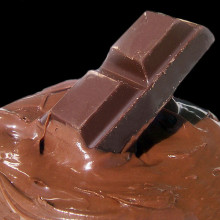
Why does overeating chocolate make you feel sick?
Kat - This is probably down to the sugar and I've conducted lots of experiments in this area!
You may notice that you feel sick after over indulging on any kind of very sweet food, whether it's chocolate or cakes, or sweets... Not very good for you but tremendous fun!
This gives your body a massive hit of sugar, all in one go. It raises the level of sugar in your bloodstream and causes something known as hyperglycemia.
It's this state of being hyperglycaemic that makes you feel sick. Now in most people, this just sends our pancreas into overdrive. We produce loads of insulin.
The cells of our body take up this excess sugar, everything returns to normal, apart from maybe wanting to stay off the cake for a bit.
But actually, in people who have diabetes, this doesn't happen properly. Either they don't produce enough insulin or their cells don't respond to the insulin properly and take up the sugar.
In fact, one of the symptoms of undiagnosed diabetes is feeling sick because you can't actually control this blood sugar and you do suffer from hyperglycemia. So yes, overeating chocolate will make you feel sick, but if you feel sick all the time after eating, you should probably go and get that checked out.
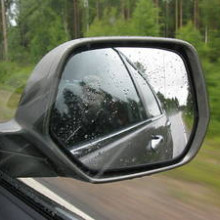
Why do I see two reflections?
Dave - This probably means that you're using a standard back-silvered mirror...
So, a normal mirror is made up of a sheet of glass and then they deposit aluminium onto the back of it, which is shiny. So the main reflection you see is from the layer of aluminium at the back of the mirror. But the front of a sheet of glass also has a weak reflection. If you look at any window, especially if it's darker on the other side, you will see a reflection of yourself in that. And so, there will be a second reflection there. Because of the thickness of the glass, it won't be in exactly the same place, so there are two reflections, the main one from the silvering at the back, and a front one from the sheet of glass in the front.
Chris - I think the other place where you see this manifest is if you had one of those car rear-view mirrors that you can flick down to stop the person who's got very bright headlights behind from dazzling you at night time. You flick the mirror down and, bizarrely, although the mirror is now pointing downwards and out of your line of view, you can still see an impression of the headlights of the car behind in that mirror - and that will be that reflection off of the glass surface rather than the silver one?
Dave - They actually put a second piece of glass at a different angle, so then you're seeing the reflection in the glass, not in the mirror itself.
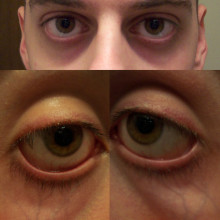
58:19 - Why do we get dark eye circles?
Why do we get dark eye circles?
We put this to Dr. Stephen Juan, Anthropologist at the University of Sydney...
Stephen - Baggy eyes and dark rings under the eyes - well, they're caused by the same cause. They are the result of body fluid problems that appear as darkness or as puffiness. Now first of all, the bags may occur when fluid accumulates in the area under the eyes and this is where the skin is thinner than anywhere else on the body. With advancing age and perhaps with the assistance of hereditary factors, the puffiness may become more prominent or even permanent. This is because the skin gradually loses its elasticity and may begin to sag and gravity doesn't help this either. Now, what appears as dark or blue-black tint, the circles around the eyes, is actually blood passing through the veins which are located just below the surface of the skin. Again, the skin is very thin. Furthermore, these circles may be darker when the eyes are tired and dark circles under the eyes often occur in women during menstruation or during pregnancy.
There are other factors too besides age in this. Specific hereditary conditions, reactions to cortisone, allergic reactions to cosmetics, tobacco smoke, and air pollution. All of these can aggravate the situation causing either bagginess or dark circles under the eyes. Sleeping on the stomach can also cause both baggy eyes and dark circles under the eyes because again of gravity, and that's my answer!
Diana - Blood vessels getting bigger around your eyes can make the skin there look darker and we think that when someone becomes more tired, their body is forced to produce more cortisol to keep them awake. When this happens, the blood volume in the body increases and then you get blood vessels enlarging to cope with the extra volume. The smaller veins under one's eye are likely to change more visibly under the thin layer of skin and larger ones under thick skin.
- Previous Growing a New Retina in a Dish
- Next What is Yuppie Flu?
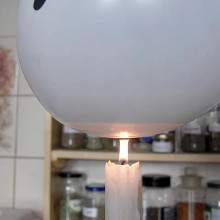










Comments
Add a comment